Denmark is a Scandinavian country known for its rich history and culture. The country is renowned for its Viking heritage, mouthwatering cuisine, and unique lifestyle concept known as “hygge.”
In addition to this, Denmark is also filled with castles. If you’re interested in exploring the best castles in Denmark, you’ll want to check out this article. Below you’ll find some of the most majestic castles to visit in the “Happiest Country in the World.”
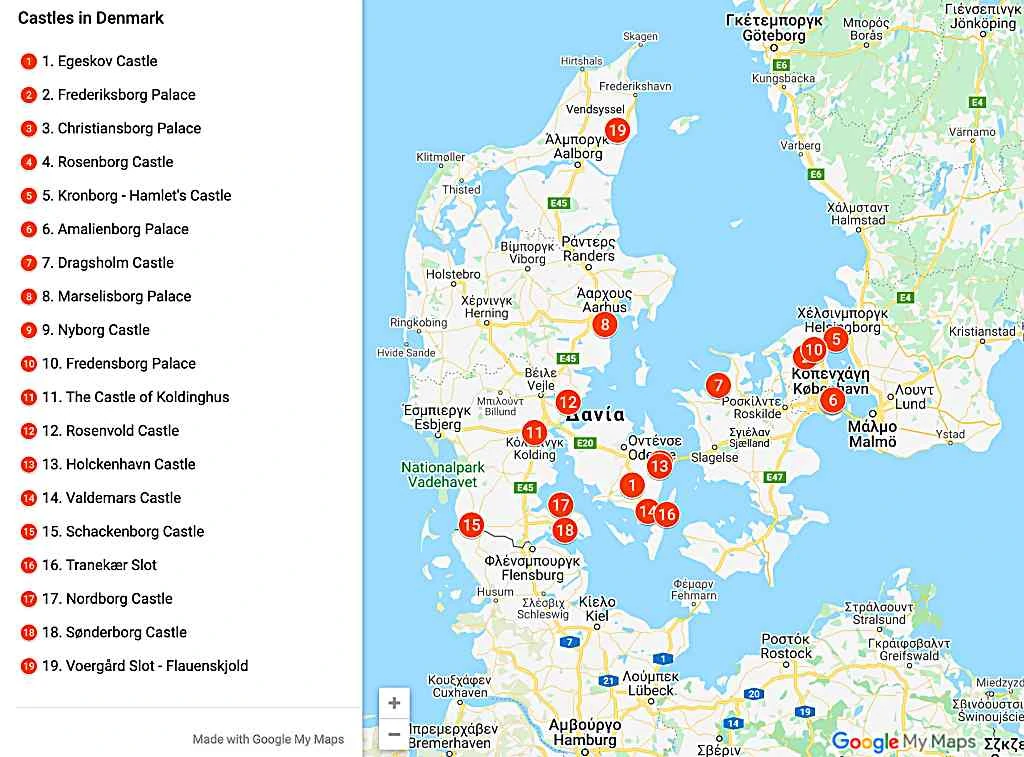
19 Famous Castles to Visit in Denmark
1. Egeskov Castle
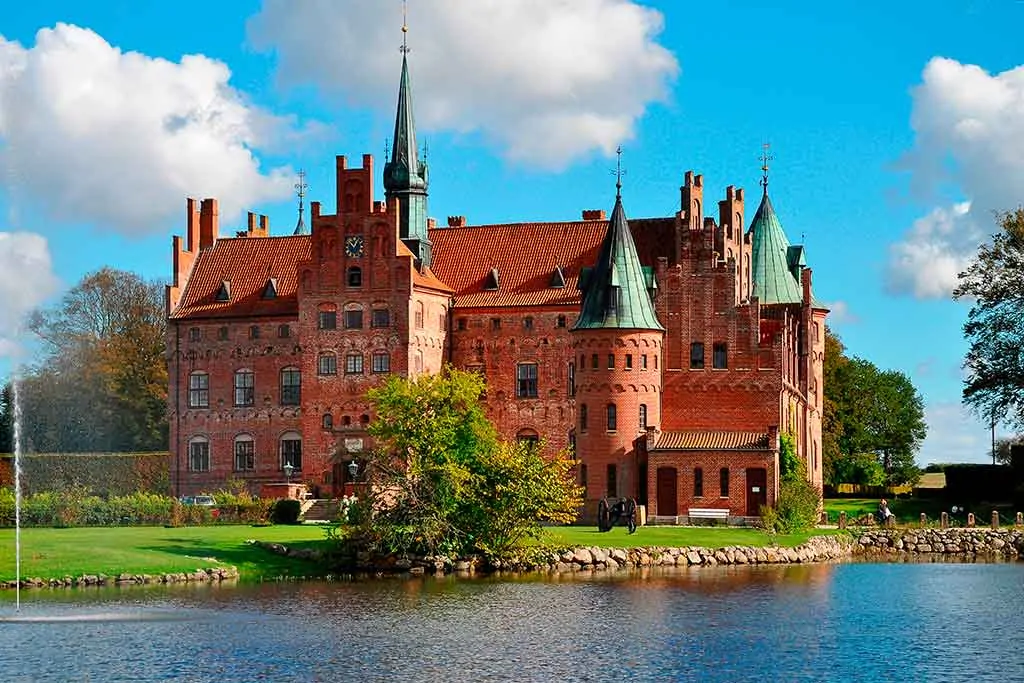
This 460-year-old castle is located on the island of Funen and is considered to be one of the best-preserved castles in all of Europe. Known for its Renaissance architecture, the castle has seen many historical events, such as gruesome battles and the Protestant Reformation.
It is built on oak piles to help support it which is what its name translates to – “oak forest.” You can tour the interior of the castle throughout the year to see iron chests, paintings, gardens, and a car and motorcycle museum. Tickets can be bought although their prices vary on the season you decide to visit it.
Where: Egeskov Gade 18
When: 16th century
Open for visit: Yes, check here for more information.
2. Frederiksborg Palace
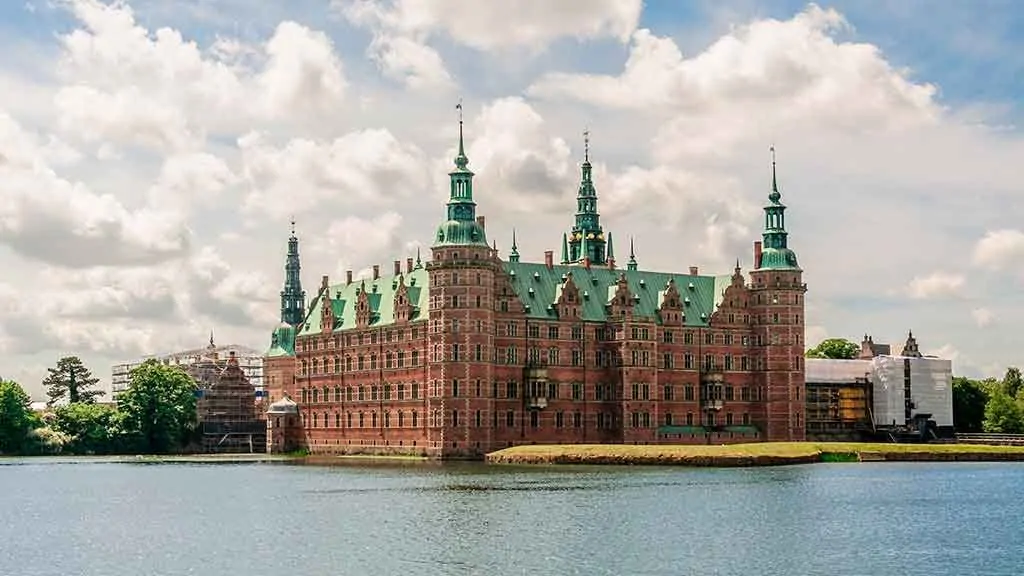
Frederiksborg Palace, situated in Hillerød, was once home to King Christian IV of Denmark and Norway during the 17th century. The palace is believed to be one of the largest in the world and is home to the Museum of Natural History which tells the history of Denmark through various exhibits.
You can tour the palace to see heavily decorated rooms and antique portrait collections. When you’re done, you can step outside to stroll through its manicured baroque gardens.
Where: Hillerød, north of Copenhagen
When: 1t7h Century
Open for visit: Yes, check here for more information.
3. Christiansborg Palace
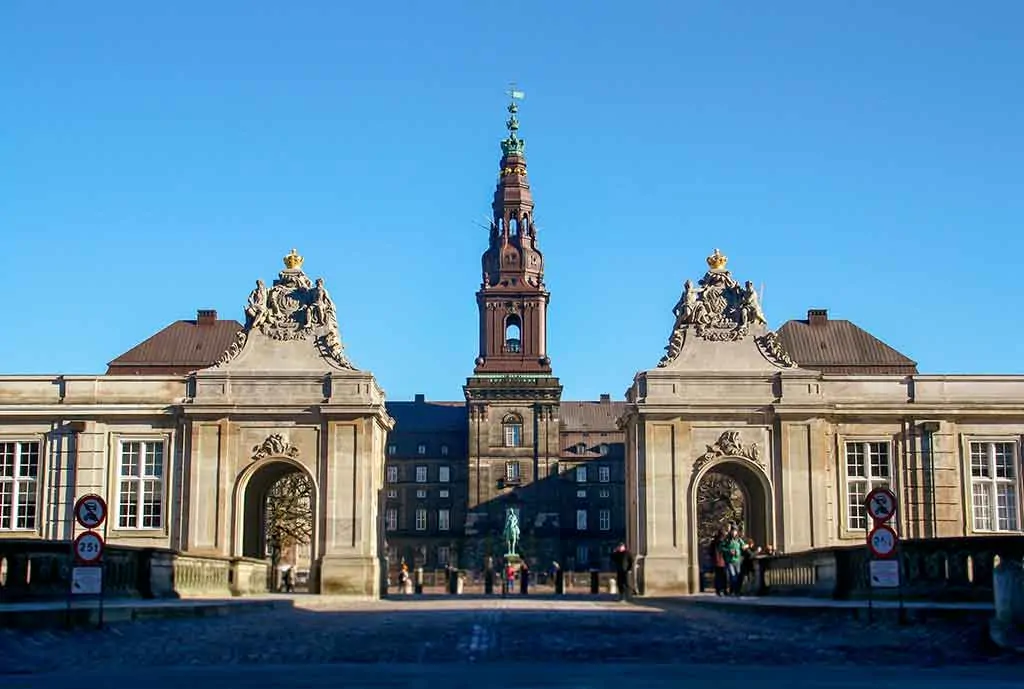
This palace rests in central Copenhagen on the island of Slotsholmen. First built in 1167, the palace has gone through numerous re-buildings due to it being burnt to the ground many times. Because of this, it has ancient castle ruins in its cellar which you can view on a tour.
The current structure, built in 1928, serves as the home to many important Danish offices, including Parliament, the Supreme Court, and Prime Minister’s home. The palace contains a handful of rooms you can tour, including the Tower Room and Oval Throne Room.
Its Great Hall can also be explored and is known for its magnificent tapestries. You can buy tickets from January to March to tour the palace although times will vary weekly.
These tickets also can be bought so you can visit separate areas of the palace, such as The Ruins, The Royal Kitchen, The Royal Reception Room, and The Royal Stable, although you can pay a bit more to have a combined ticket which will allow you to view them all.
Where: Central Copenhagen
When: 1167
Open for visit: Yes, check here for more information.
4. Rosenborg Castle
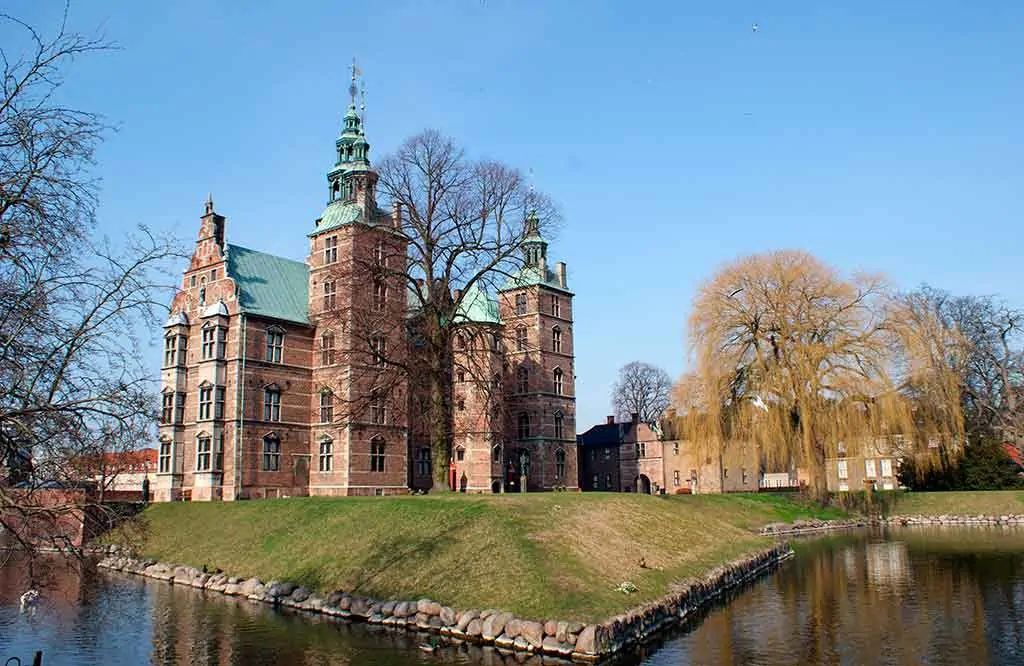
Rosenborg Castle, built in 1606, was originally intended to be the summer home for Christian IV. Today, you can take a tour of this massive structure which holds the Danish Crown Jewels and Royal Regalia.
It’s also known for its Knights’ Hall which is filled with coronation thrones, handwoven tapestries telling the stories of battles between Denmark and Sweden, and towering lion statues.
In addition to this, the castle is known for its royal portraits and wax figures of former Danish royals. Rosenborg Castle is also home to a stunning collection of Flora Danica, or Venetian glass, which can be found nowhere else in the world.
The castle is opened year-round and admission varies on ages, although children 17 years old and younger can enter for free.
Where: Copenhagen
When: 17th Century
Open for visit: Yes, check here for more information.
5. Kronborg – Hamlet’s Castle
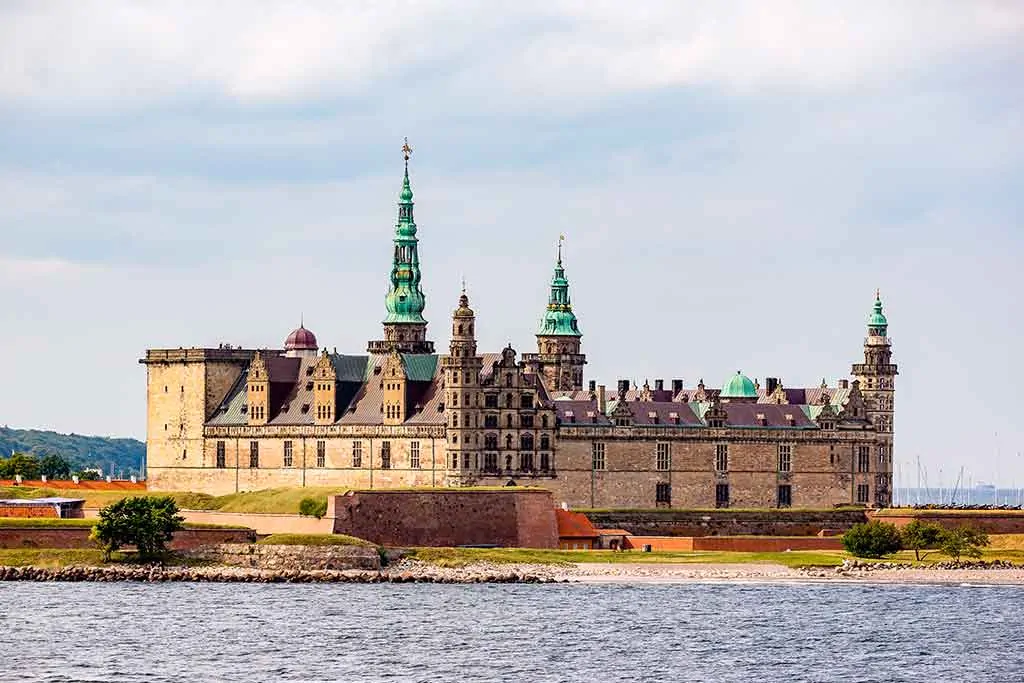
Built in the 16th-century, Kronborg Castle is situated on the edge of the island of Zealand near Sweden. This UNESCO site is very popular due to it being depicted as Elsinore in Shakespeare’s tragic play Hamlet.
Because of this, it is also known as Hamlet’s Castle. Besides it being an important literary site, the castle is also filled with history. When it was first built, it served as the home of Frederick II and also functioned as a toll center as it collected Sand Dues from sailors as they drifted by.
Today, you can tour the interior of the castle to see its unique spires, towers, copper roofs, ballroom, and Kronborg Tapestries. You can also visit the banquet hall which is known for its sweet honey scented candles. Sometimes, guests can also take a walk to the castle’s casemate where it is believed that the mythological hero Holger Danske sleeps.
Tickets for guided tours can be bought although their prices vary on the season you visit. You can also attend Hamlet plays held throughout the year here or stop by the castle’s gift shop.
Where: Island of Zealand
When: 16th Century
Open for visit: Yes, check here for more information.
6. Amalienborg Palace

Amalienborg Palace, located in Copenhagen, was built in 1760 and serves as the home to the Danish royal family. The palace is constructed with four facades which consist of Moltke’s Palace, Brockdorff’s Palace, Schack’s Palace, and Levetzav’s Palace. These four structures form together to create a unique octagonal courtyard.
The palace is opened for tours from April to December which will allow you to view the reception rooms, gala hall, and a garden room where you can learn more about royal traditions.
You can also watch the changing of the Royal Guards during the day. Tickets are required to enter although children 17 years and younger can enter for free.
Where: Copenhagen
When: 17th Century
Open for visit: Yes, check here for more information.
7. Dragsholm Castle

Built in the 13th-century, Dragsholm Castle overlooks Nekselø Bay and features stunning baroque architecture. The castle was once the site of Count’s Feud, a war of succession in the country, but was able to survive the massive armies meant to attack it due to its incredible durability. Eventually, the castle was used as a prison.
This castle now serves as a hotel and restaurant. It offers many interesting activities guests can enjoy, like guided castle tours, herb walks, wine tastings, and flower arranging classes.
If you do decide to stay, you’ll have to watch out for the many ghosts who supposedly call this castle home, like an Earl who is said to drive around horse-drawn carriages on the grounds.
Where: Dragsholm Alle, 4534 Hørve
When: 13th Century
Open for visit: Yes, check here for more information.
8. Marselisborg Palace

Marselisborg Palace, constructed in 1902, is the Danish family’s royal residence in Aarhus and was the Danish people’s wedding gift to King Christian X and Queen Alexandrine. The castle now serves as the summer residence to Queen Margrethe II.
While the palace is not opened for tours, the surrounding parks and gardens are, including the queen’s famous rose garden. When the queen is at home, you can also view the Royal Life Guard change.
Where: Aarhus
When: 19th Century
Open for visit: When the royal family is not in residence the public can explore the English-style grounds and rose garden (free admission). Check here for more information.
9. Nyborg Castle
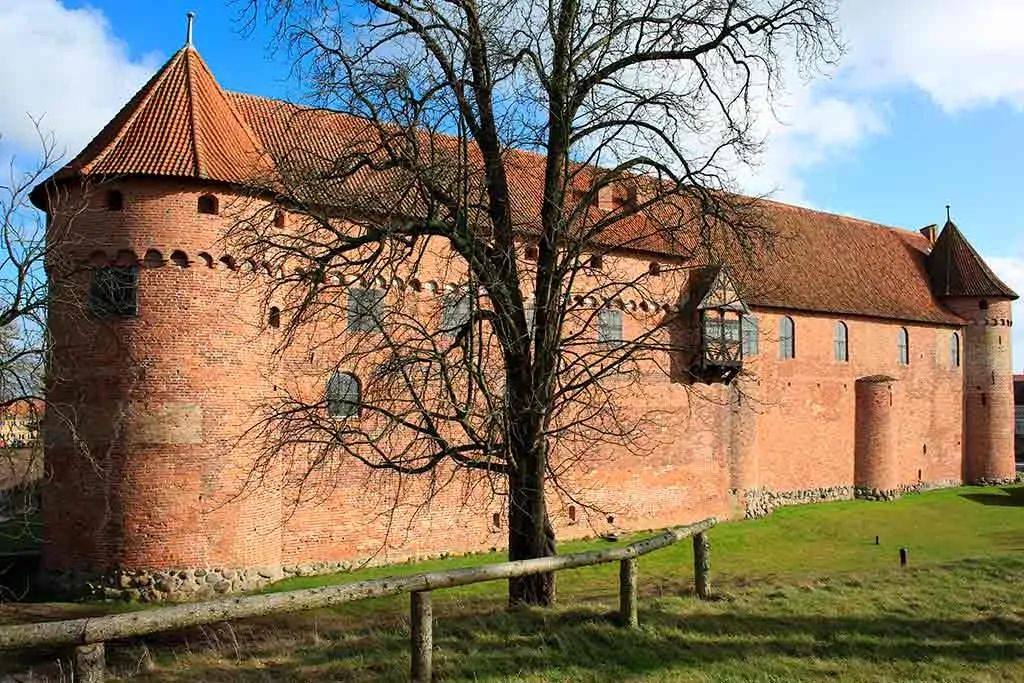
This medieval castle was built in 1170 on the island of Funen. Considered to be one of the oldest of its kind in Denmark, Nyborg Castle has a rich history as it is home to some of Denmark’s most important historical events, such as when King Eric V Klipping signed the first Danish Constitution here in 1282.
It was also where the first Danehof (Danish Parliament) was housed. In addition to this, King Christian III also enjoyed staying here. Eventually, the castle fell into disrepair before it was restored in 1913.
You can step inside to view its beautiful chambers as well as tour the Østfyns Museum which houses old furniture saved from the castle and architectural models of it.
While it is currently closed until 2020 due to new restorations, you can still take a tour of Mayor’s Yard, although tickets are required.
Where: Nyborg
When: 1170
Open for visit: Yes, check here for more information.
10. Fredensborg Palace

Fredensborg Palace lies on the eastern edge of Lake Esrum near the island of Zealand. Built in 1753, this Dutch-baroque palace serves as the Danish royal family’s spring and fall residence.
The palace is known for holding many important royal events, such as weddings. It also is home to official state visits and has a large window containing a piece of glass where visiting officials scratch their name into it with a diamond.
While palace tours are not always offered, you can sign up for a guided tour of its chapel or palace gardens which is home to unique sculptures of fishermen and farmers.
Where: Lake Esrum
When: 1753
Open for visit: The palace and the private gardens are reserved for the Royal Family. On select days July-August, it is possible to visit the palace, the Orangery, and the herb garden on a guided tour. Check here for more information.
11. The Castle of Koldinghus

Built in the 13th-century by Christoffer I, the Castle of Koldinghus rests on the Jutland Peninsula. It has survived many tragic historical events, including a fire during the 1800s caused by the Napoleonic Wars.
Today, the castle is home to a museum which contains castle furniture, church relics, and Danish paintings. There are guided tours you can sign up for that will take you around the structure and tell you more about the history of it.
Kids can also enjoy a visit here as it offers fun activities for them like a dress-up workshop and royal court training day. The castle is opened year-round for a few hours per day and has tickets available for sale although their prices vary depending on the season.
Where: Kolding
When: 13th Century
Open for visit: Yes, check here for more information.
12. Rosenvold Castle
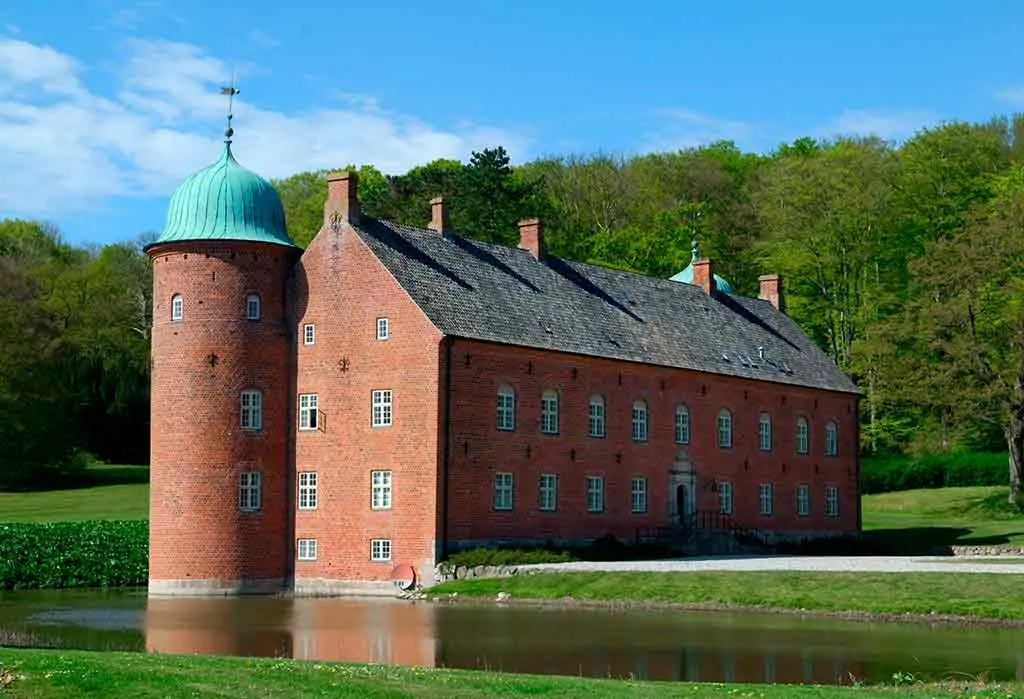
Rosenvold Castle overlooks the majestic Vejle Fjord. Built by Holger Rosenkrantz in 1570 on serene farmland, this quaint structure has had a somewhat tumultuous history, such as in the 1600s when the owner at the time was ordered by the king to renounced the castle to his daughter.
Over time, the castle eventually fell into disrepair and was virtually ruined by Queen Margaret I. Since then, it has been restored, although it serves as a private castle. Because of this, no public tours are offered. However, you can stop by to view its exterior and nearby the fjord.
Where: Midtjylland
When: 1570
Open for visit: Not open to the public
13. Holckenhavn Castle
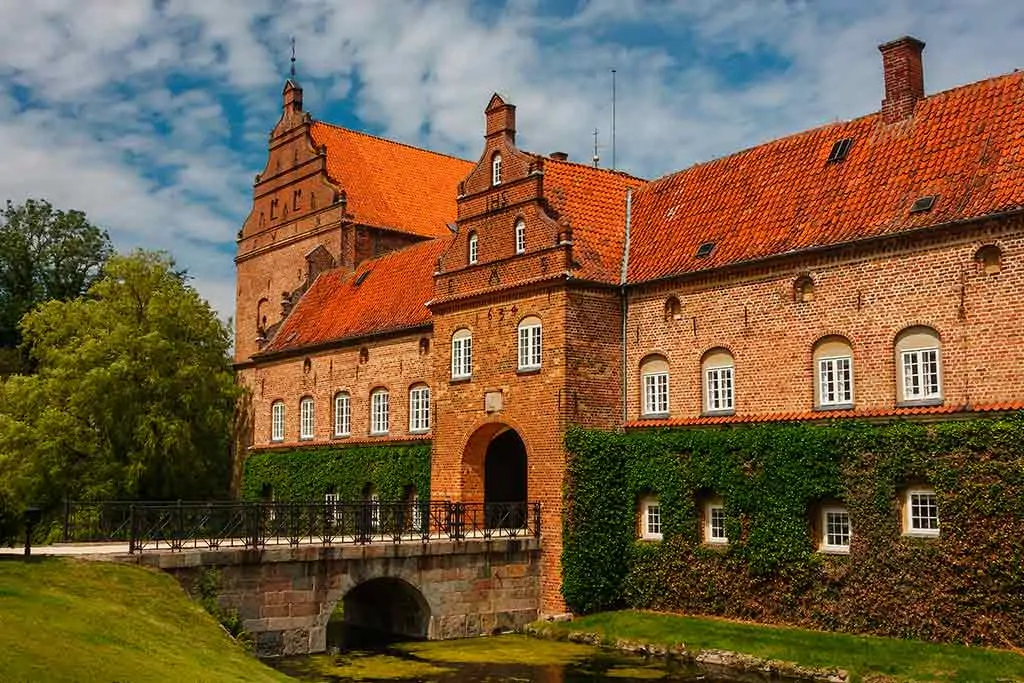
This manor house was built during the 16th-17th centuries and resides near the peaceful Holckenhavn Fjord. Originally known as 00, it was eventually given its current name by Eiler Holck when he obtained the castle. Today, the castle still remains in the Holck family.
Holckenhavn Castle features beautiful displays of Renaissance architecture and now serves as a hotel. You can stay a few nights or just take a tour of its interior to see the grand halls and decorated living rooms. The castle also has a restaurant which is known for its culinary delights that use local ingredients.
Where: Nyborg
When: Late 16th and early 17th century
Open for visit: Yes, check here for more information.
14. Valdemars Castle
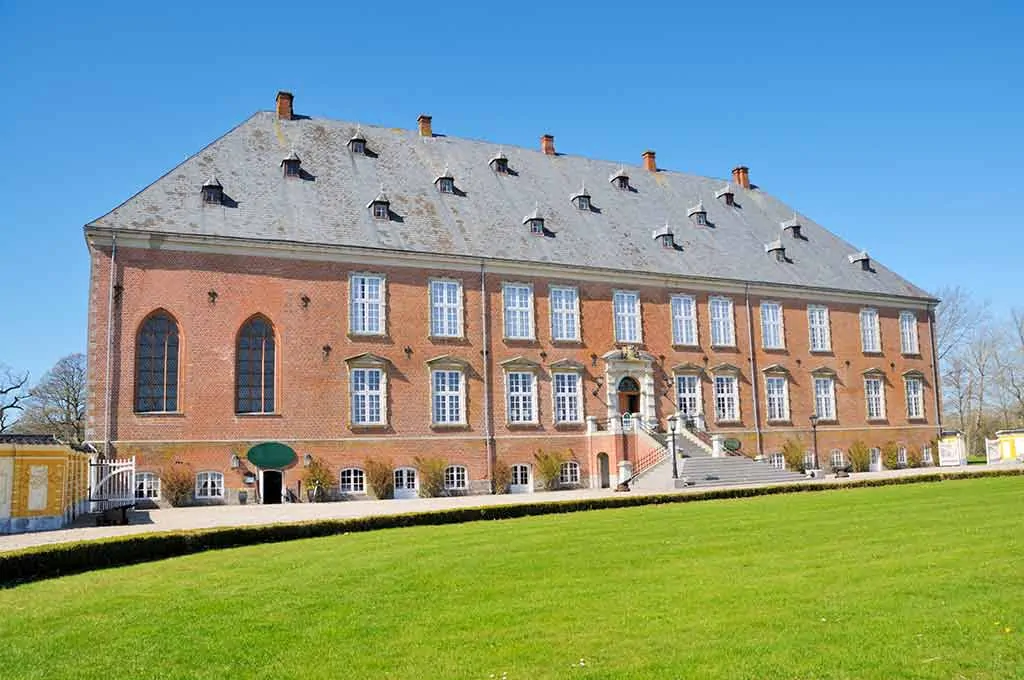
Valdemars Castle might be a small structure, but don’t let its size fool you. Situated on Tåsinge Island, the castle was built under the orders of King Christian IV as a gift to his son. It features a unique red and yellow exterior and numerous gardens that are surrounded by woodlands. The castle is also home to a mini-golf course.
You can take a tour of its interior to see the chapel, toy museum, and its maritime museum. When you’re done, you can stop by at its cafe to grab a bite to eat or head down to the nearby beach. The castle is opened January to August from Tuesday to Sunday. Tickets vary in their prices based on ages and the activities you plan to do while here.
Where: Svendborg
When: 17th Century
Open for visit: Yes, check here for more information.
15. Schackenborg Castle
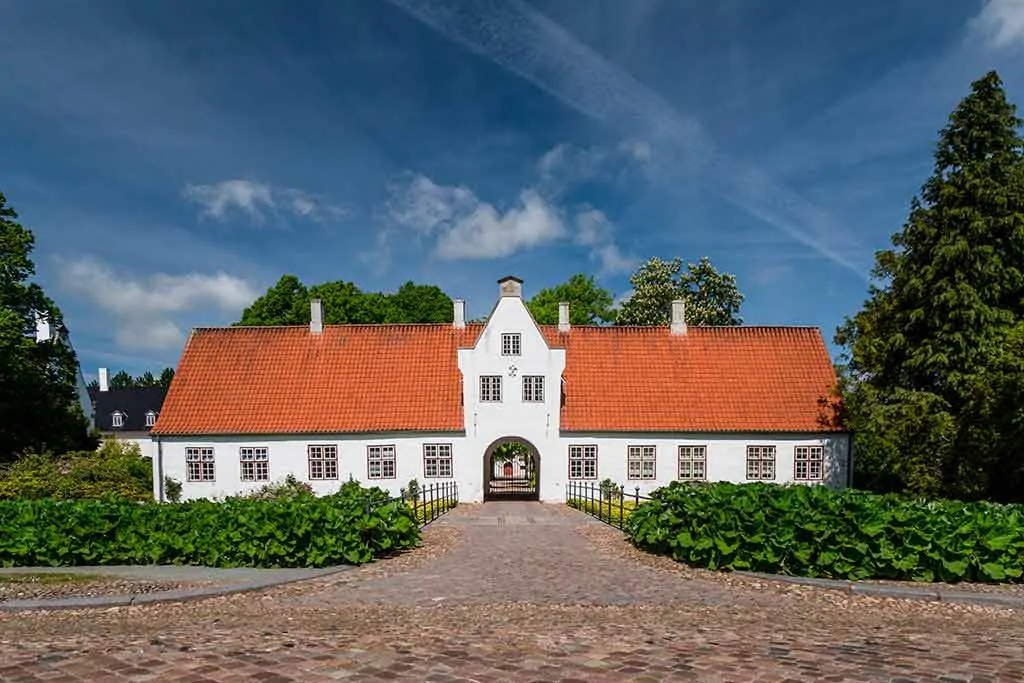
This castle is packed with history. Once called Møgeltønderhus, Schackenborg Castle was originally the home of the Roman Catholic Diocese of Ribe. It also was an important spot during Denmark’s Reformation before being taken over by the Monarchy of Denmark. Recently, it served as Prince Joachim’s residence until he left in 2014.
While the castle is not usually opened to the public, you can sometimes tour it to view the grand interior. However, the gardens are opened for tours in the summer. These guided tours are given in Danish and last for about one hour.
Tickets need to be bought for specific times during the day. While here you might also be able to attend events which are held throughout the year, like classical music concerts.
Where: Tønder
When: 17th Century
Open for visit: Check here for more information.
16. Tranekær Slot

Tranekær Slot is one of the oldest buildings in Denmark as has been in the Ahlefeldt-Laurvig family since 1659. While it no longer serves as a grand home, it has been converted into a hotel, restaurant, conference center, and agricultural/forestry destination.
Tours of it are available during the summer for two weeks and will take you through the structure to view its many architectural details, including its spiral staircase. When you’re done the tour, you can try some of its iconic Countess’s cherry wine, an old family recipe known for its rich cherry taste.
Where: Tranekær
When: 17th Century
Open for visit: Check website before visiting
17. Nordborg Castle
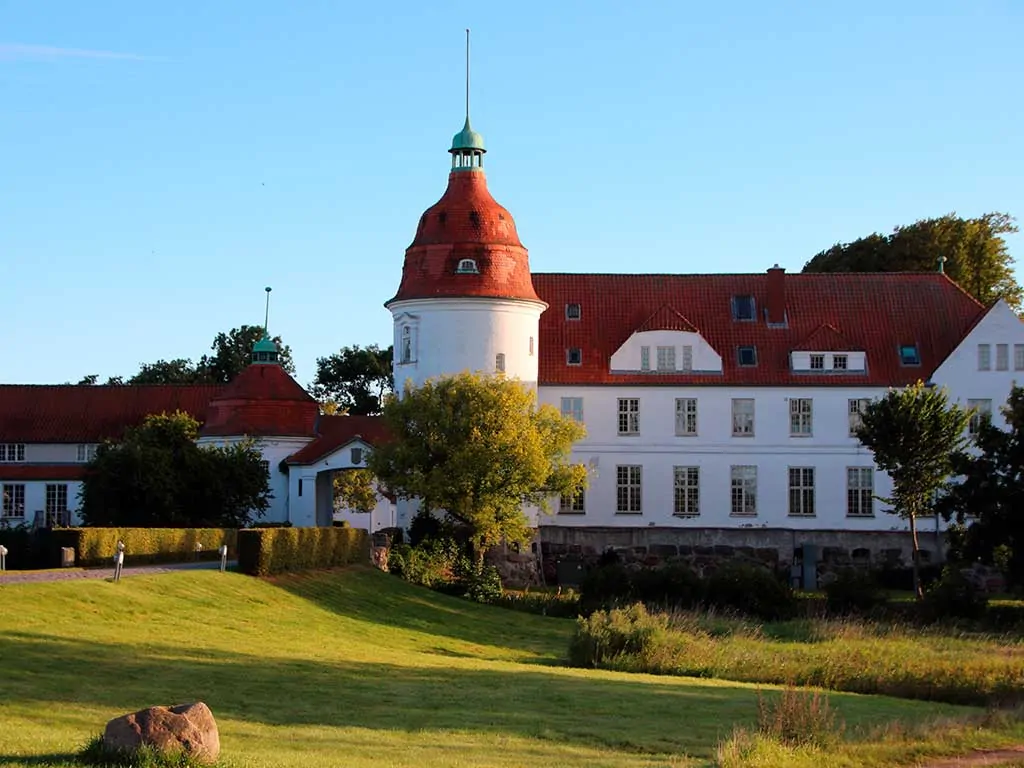
Situated near Bordburg Lake on Als Island, Nordborg Castle was built in 1151 by King Svend to be a fortress against the Wends.
While the original castle was destroyed by fire, it was rebuilt in 1911 and used as a German school until 1920.
You can tour its exterior as its grounds are opened every day from 10AM-5PM but keep in mind interior tours are not permitted.
Where: Als Island
When: 12th Century
Open for visit: Interior tours are not permitted.
18. Sønderborg Castle

Sønderborg Castle was built in 1158 and situated in Sønderborg. It overlooks the Als Fjord and has been converted into a museum that tells of Denmark’s history during the Middle Ages to the 1920s. In the different castle rooms, you can view various cultural artefacts which range from textiles to crafts.
The castle also hosts events throughout the year you can participate in, like birdwatching tours and whale festivals. Tours can be taken of the structure although they vary in their times during the year. Tickets also vary in their prices for adults and students but those 18 years old and younger can enter for free.
Where: Sønderborg
When: 1158
Open for visit: Yes, check here for more information.
19. Voergård Slot – Flauenskjold

Located in Dronninglund, Voergård Slot – Flauenskjold is an exquisite Renaissance structure built in 1588 and once served as the home to the Børglum Monastery.
Besides its incredible towers, large moat, and dark dungeons, the castle is known for its collection of art which ranges from paintings by Raphael and Goya. You can sign up to take a guided tour anywhere from April to December of its interior to learn more about its history.
During the summer, the castle time travels back to the Middle Ages and has costumed interpreters dressed as knights and merchants wandering around its grounds.
Where: Dronninglund
When: 16th Century
Open for visit: Yes. Check website before visiting
Denmark is a stunning country that is sure to interest any traveler. Not only is it filled with beautiful natural wonders and fun cultural activities, but it’s packed with numerous castles you can explore. These Danish castles are not only architectural marvels, but help to tell the story of Denmark in a unique way.
